Over the last two years, the fickle eye of the international media has strayed from the ongoing demonstrations in Bahrain. In February 2011, with the advent of the Arab uprisings, Bahrainis took to the streets to demand constitutional reform, equal rights, and, eventually, the overthrow of the ruling Bahraini monarchy. These protests were not new: Bahrain has a long history of organized activism, and Bahrainis have protested for political reform and more labor rights since the 1930s. While the demonstrators—both Sunni and Shi’a—are advocating for a more equitable and democratic political system, the ruling monarchy has painted the conflict in sectarian terms, blaming Iran for inciting domestic discord.
The monarchy`s response to the uprising has been a violent one: security forces famously demolished the Pearl Roundabout in early 2011, and injured, detained, and killed scores of protesters. In the following months, the regime has continued to detain and torture opposition leaders, human rights activists, and medical professionals who treated injured protesters during the crackdown. The regime-commissioned BICI report, which revealed systemic practices of torture and abuse by Bahraini security forces, has failed to bring about any significant change. Clashes between activists and riot police continue to occur on an almost daily basis.
The United States (and many of Bahrain’s other allies) has continued to stand by the monarchy, while weakly calling for dialogue. After a brief respite, the US government resumed the sale of arms and military equipment to the Bahraini monarchy last year.
The photographs below represent a select chronological look at the protest movement as the uprising has continued to unfold.

A pro-democracy protester marches in Ali Mushaima’s funeral procession. His sign reads “Peaceful"
(Image by Saeed Saif, February 2011).
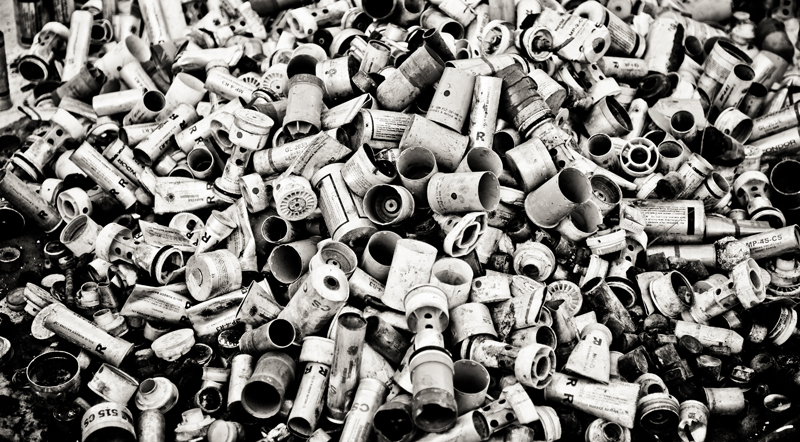
A single day’s collection of tear gas cannisters in Buri (Image by Saeed Saif, October 2011).

Dismissed and prosecuted doctors stand outside of the Ministry of Labor, Isa Town
(Image by Saeed Saif, November 2011).
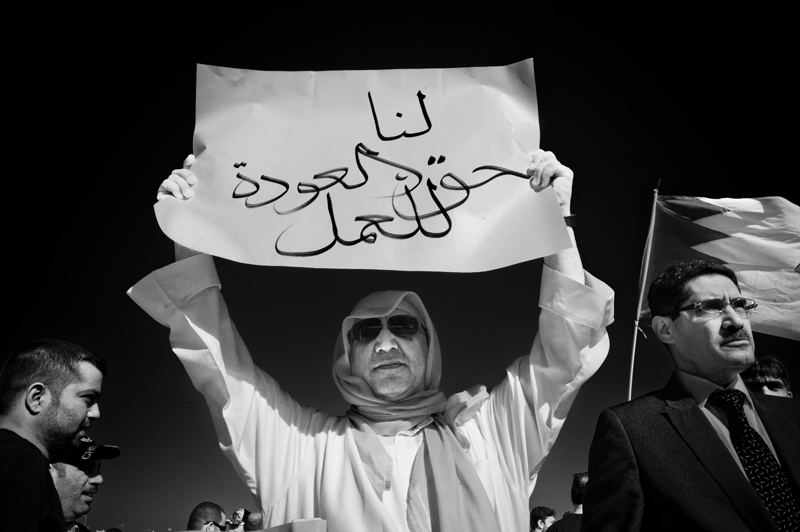
A worker holds a sign that reads: “We have the right to return to our jobs” after a protest in front of the Ministry of Labor in Isa Town. Many employees were fired by the regime in the wake of the protests for suspected involvement with the opposition (Image by Saeed Saif, November 2011).
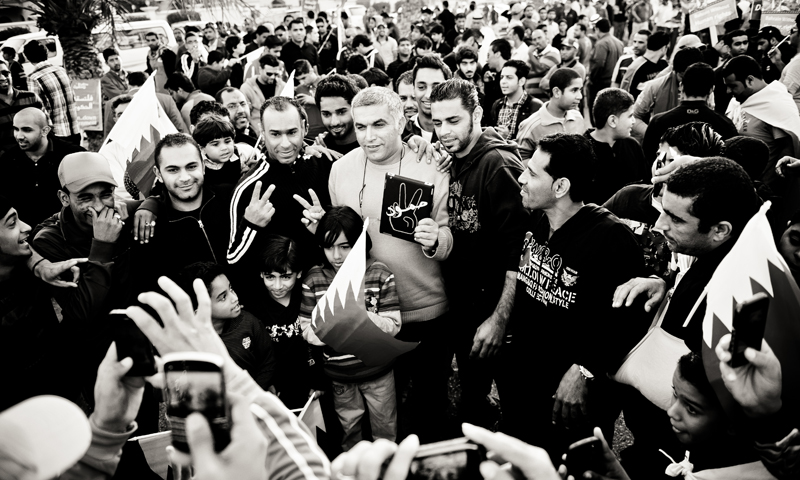
Human rights activist Nabeel Rajab at an opposition rally near Budaiya Highway
(Image by Saeed Saif, December 2011).
.jpg)
Sheikh Ali Salman, Al-Wefaq’s Secretary General, during a rally near Budaiya Highway
(Image by Saeed Saif, December 2011).
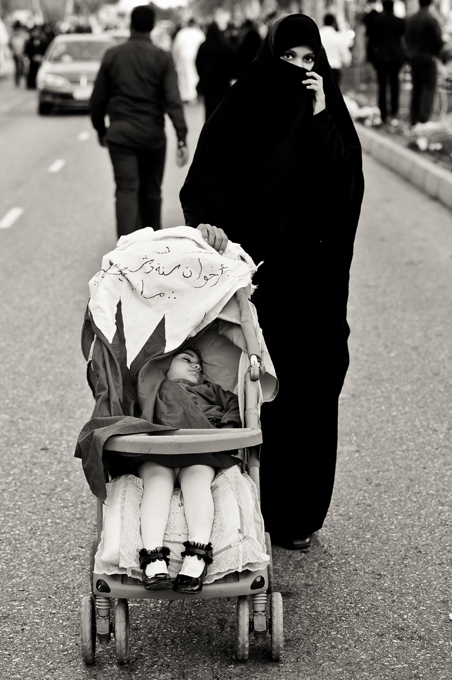
A woman and her child at a protest (Image by Saeed Saif, March 2012).
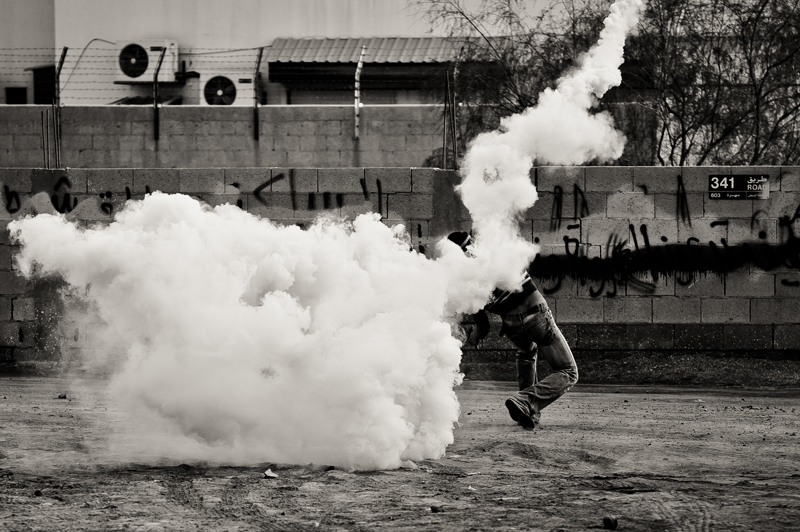
A protester throws a tear gas cannister back at the riot police in Sitra (Image by Saeed Saif, December 2011).
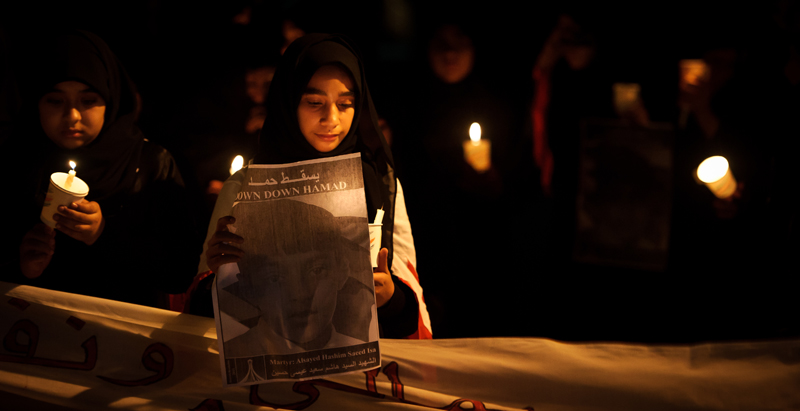 Candlelit march in Sitra (Image by Saeed Saif, January 2012).
Candlelit march in Sitra (Image by Saeed Saif, January 2012).

Father of Mahmood Abu Taki, an activist who was killed when security
forces attacked the Pearl Roundabout (Image by Saeed Saif, January 2012).
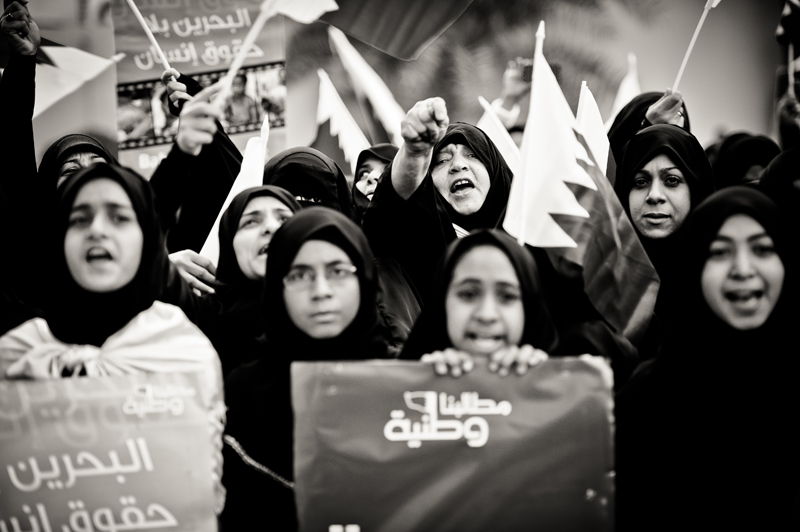
Protest in front of the UN building in Manama (Image by Saeed Saif, January 2012).
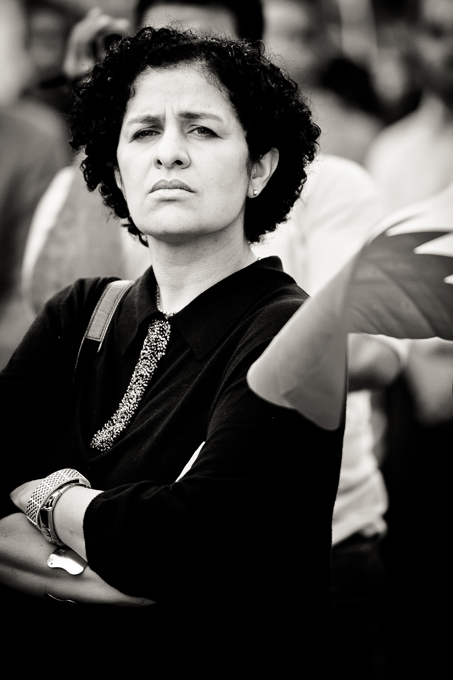
Dr. Rula Al-Saffar at a protest in front of the UN building in Manama
(Image by Saeed Saif, January 2012).
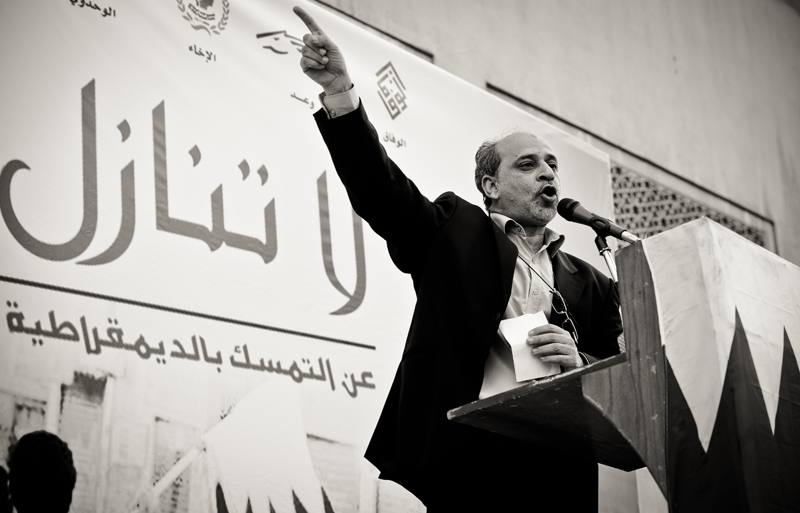
Former MP Abduljalil Khalil speaks at a protest in front of the UN building in Manama
(Image by Saeed Saif, January 2012).
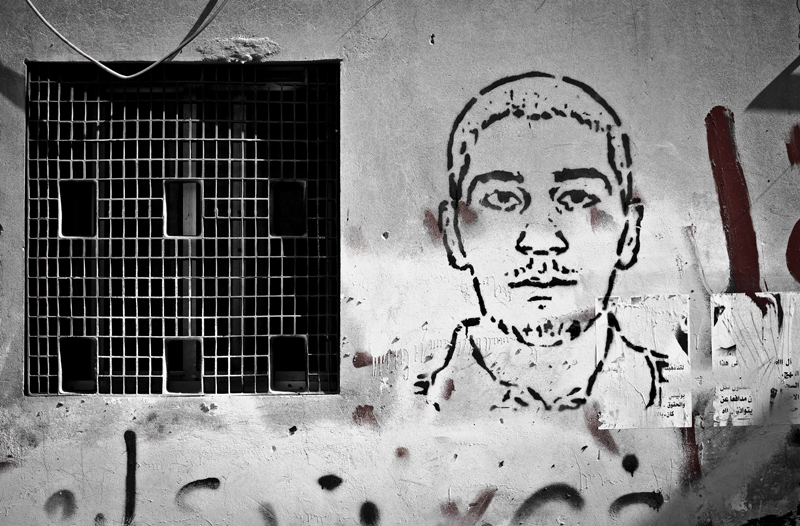
Picture of Ahmed Farhan, an activist who was killed by security forces in March of 2011, on the wall of his home in Sitra (Image by Saeed Saif, January 2012).
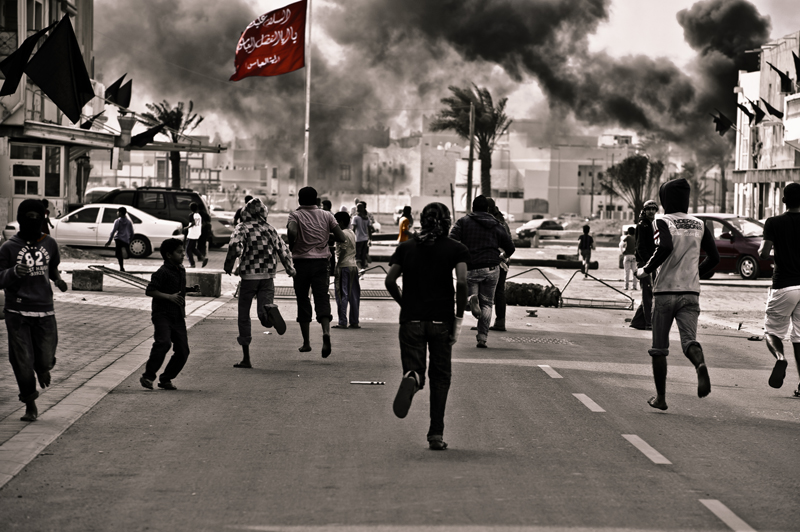
Clashes between protesters and riot police in Sitra (Image by Saeed Saif, January 2012).
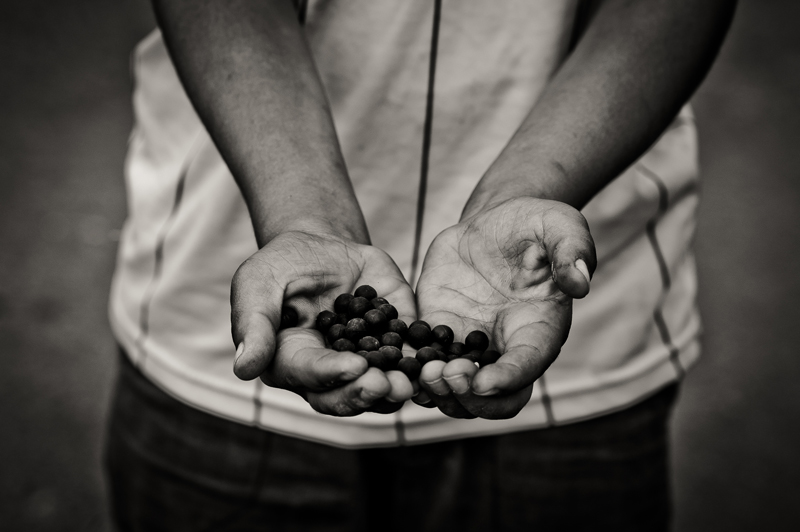
Small rubber bullets used against protesters in Sitra (Image by Saeed Saif, January 2012).
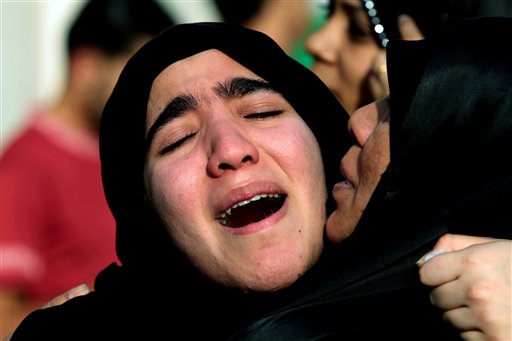
Relatives mourn during a the funeral of a boy killed in Manama, Bahrain, in January 2013. Opposition groups claim the boy died from respiratory problems triggered by heavy tear gas. (Photo by Hasan Jamali/AP Photo).
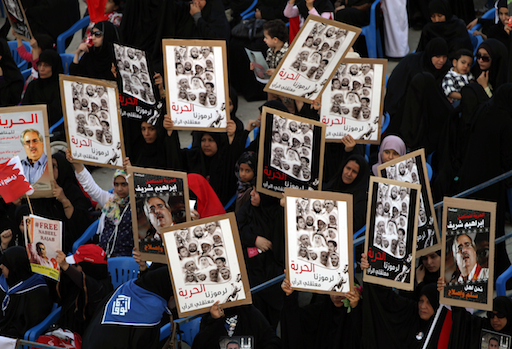
Bahrainis wave signs with images of jailed political and human rights leaders during an anti-regime rally in Meqsha, Bahrain, in February 2013. The signs read: "freedom for our symbols, prisoners of conscience." (Photo by Hasan Jamali/AP Photo).
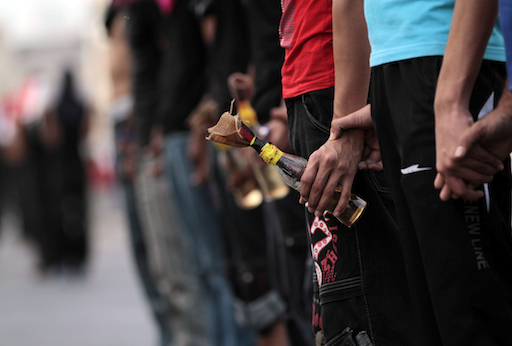
Masked Bahraini anti-regime protesters carrying petrol bombs stand along the sides of a passing march in Malkiya, Bahrain, in October 2012, where marchers were calling for freedom for political prisoners and honoring those killed in the uprising from Bahrain`s western villages. Youths with petrol bombs also walked ahead and behind the marchers as lookouts for any riot police who might approach to disperse the gathering. (Photo by Hasan Jamali/AP Photo).
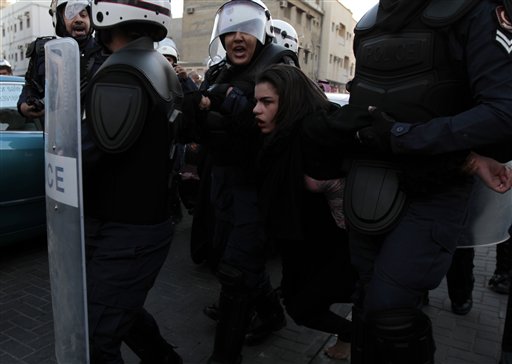
Riot police arrest a Bahraini anti-regime protester during a pro-democracy protest in the capital of Manama, in January 2013 (Photo by Hasan Jamali/AP Photo).